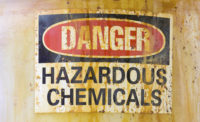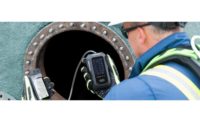A growing range of wearable monitors may help people lead stronger, smoother lives, but MIT's newest device is looking to save them--specifically, by alerting soldiers when toxic gases are around.
Researchers from MIT's Swager Group developed the small chemical sensors to detect toxic gases in trace amounts using adapted carbon nanotubes, and are working to put this technology in wireless-friendly form for field use as soon as possible.
The sensor is an electric circuit containing chemically altered carbon nanotubes, which are wrapped in insulating material to tamper their usual high-conductivity. When certain toxic gases are present in the air at just 10 parts per million (or even fewer), that insulating material starts to break down, letting the nanotubes complete the electric circuit to send wearers a warning via near-field communication (NFC) technology.
Its simplicity and size could be a huge benefit to people who work in chemically hazardous environments, and particularly loaded-down military members.
Not surprisingly, the U.S. military has been striking out into various corners of the wearables space on its own over the past several years. Its research arms have explored flexible exoskeletons as armor, robot-fitted footwear for extra running speed, and the potentially wide applications of body sensors for keeping soldiers in top condition.
Another advantage to MIT's innovative device, and which may engage military and civilian interest, is its price tag: according to the team, each sensor costs around a nickel to make.
Source: Forbes magazine www.forbes.com







